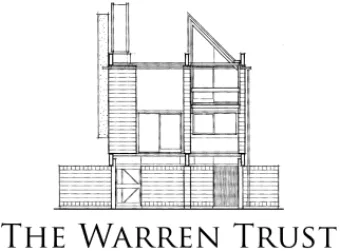A+W•NZ feature in NZIA Venice Publications
30 Jul 2016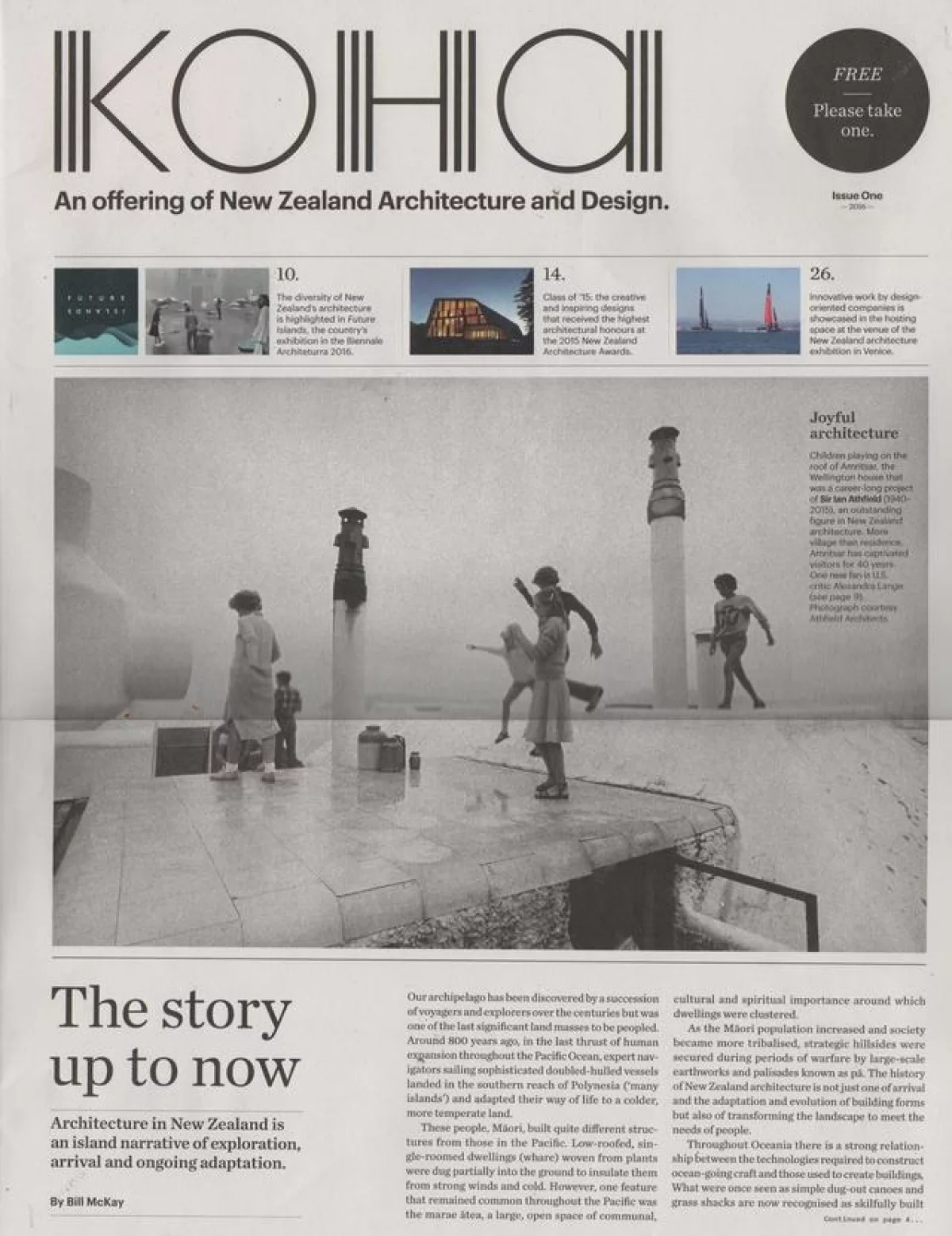
The NZIA Venice Biennale 2016 exhibition Future Islands, led by Kathy Waghorn (Assistant Director) and Charles Walker (Director), has been a huge success, has been well-attended and mentioned in NZ media and online media widely.
The exhibition was accompanied by an excellent NZIA publication Future Islands, edited by Kathy Waghorn. This substantial book acts as a catalogue to the installation, and is filled with a wide variety of text and images, a glimpse of New Zealand's diverse architectural communities, methods of practice and architectural outcomes.
A+W•NZ feature in the Chapter 4: Islands of Knowing section, on pages 74-75. The A+W•NZ contribution to the Future Islands Exhibition was a sound installation, weaved together from the expert recordings made by Dick Reade of Reade Audio Ltd of the A+W•NZ He Wai: A Song? event held during AAW 2015.
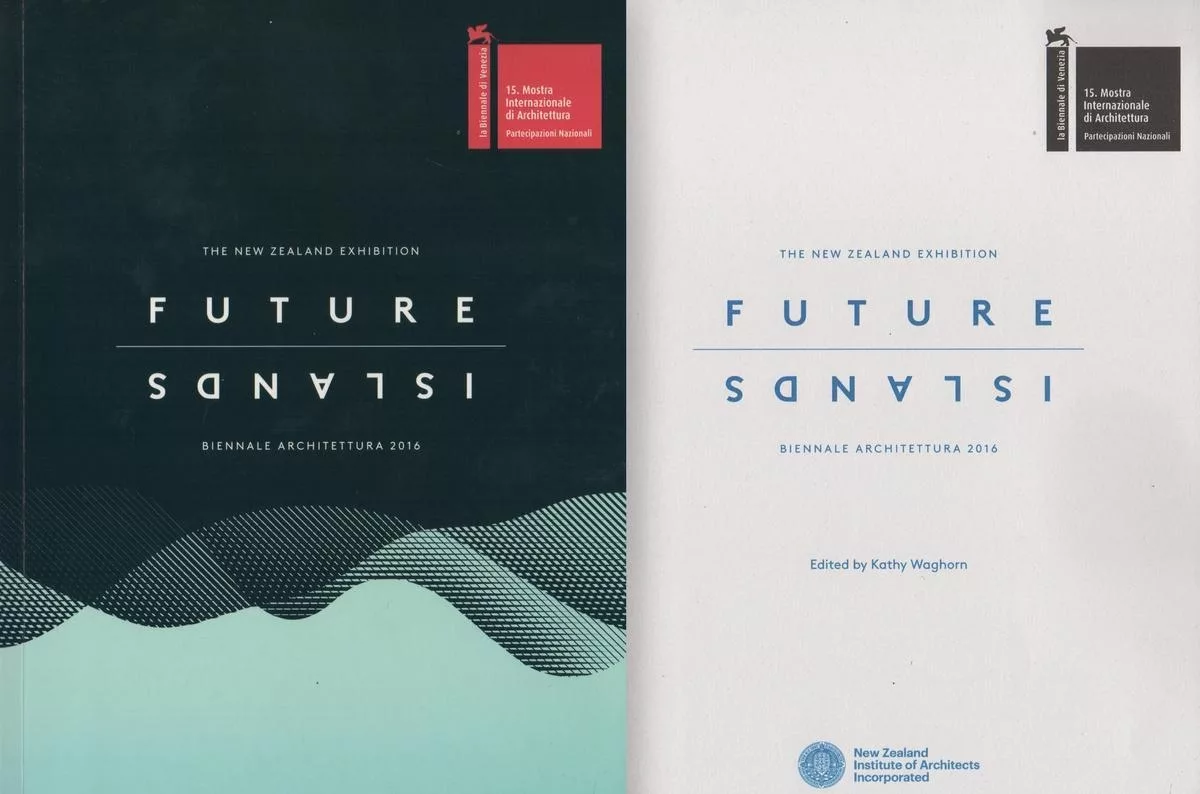
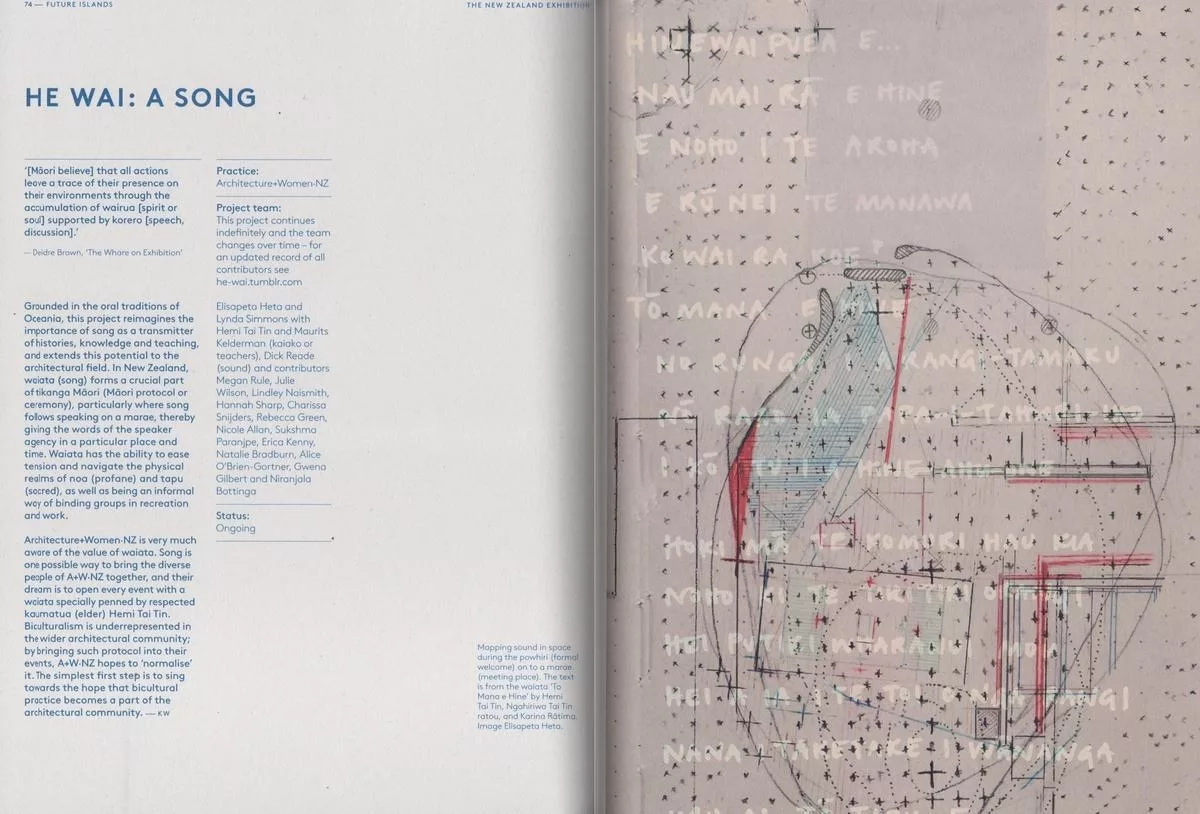
The text on page 74 includes the following;
"'[Maori believe] that all actions leave a trace of their presence on their environments through the accumulation of wairua [spirit or soul] supported by korero [speech, discussion].' - Deidre Brown, 'The Whare on Exhibition.'
Grounded in the oral traditions of Oceania, this project reimagines the importance of song as a transmitter of histories, knowledge and teaching, and extends this potential to the architectural field. In New Zealand, waiata (song) forms a crucial part of tikanga Maori (Maori protocol or ceremony), particularly where a song follows speaking on a marae, thereby giving the words of the speaker agency in a particular place and time. Waiata has the ability to ease tension and navigate the physical realms of noa (profane) and tapu (sacred), as well as being an informal way of binding groups in recreation and work.
Architecture+Women•NZ is very much aware of the value of waiata. Song is one possible way to bring the diverse people of A+W•NZ together, and their dream is to open every event with a waiata specially penned by respected kaumatua (elder) Hemi Tai Tin. Biculturalism is underrepresented in the wider architectural community; by bringing such protocol into their events, A+W•NZ hopes to 'normalise' it. The simplest first step is to sing towards the hope that bicultural practice becomes a part of the architectural community. -KW
Practice: Architecture+Women•NZ
Project Team:
This project continues indefinitely and the team changes over time - for an updated record of all contributors see he-wai.tumblr.com
Elisapeta Heta and Lynda Simmons with Hemi Tai Tin and Maurits Kelderman (kaiako or teachers), Dick Reade (sound) and contributors Megan Rule, Julie Wilson, Lindley Naismith, Hannah Sharp, Charissa Snijders, Rebecca Green, Nicole Allan, Sukshma Paranjpe, Erica Kenny, Natalie Bradburn, Alice O'Brien-Gortner, Gwena Gilbert and Niranjala Bottinga.
Status: Ongoing."
One of the aims for A+W•NZ is 'visibility' for women in the architectural profession, and for the Venice exhibition we purposefully created an invisible and non-object based installation. While our presence is definite and continuous as the waiata weaves through the Future Islands exhibition space, that presence it is not visible and undefined. Many diverse voices presented in a layered unity create a surrounding presence without being seen, a comment on how many women operate in their architectural lives.
KOHA
Another free NZIA publication available to visitors to the Venice exhibition is Koha. Alongside articles by Bill McKay, John Walsh, Pip Cheshire, Philip Clarke, Alexandra Lange, Desna Whaanga-Schollum, Craig Martin, and Michael Smythe, an article by A+W•NZ's Lucy Treep and Lynda Simmons provides an overview of the A+W•NZ organisation and its aims.
'Designing Women Seek Rightful Place' calls for real inclusiveness, and how the architectural community may achieve this by removing barriers and making small changes together.
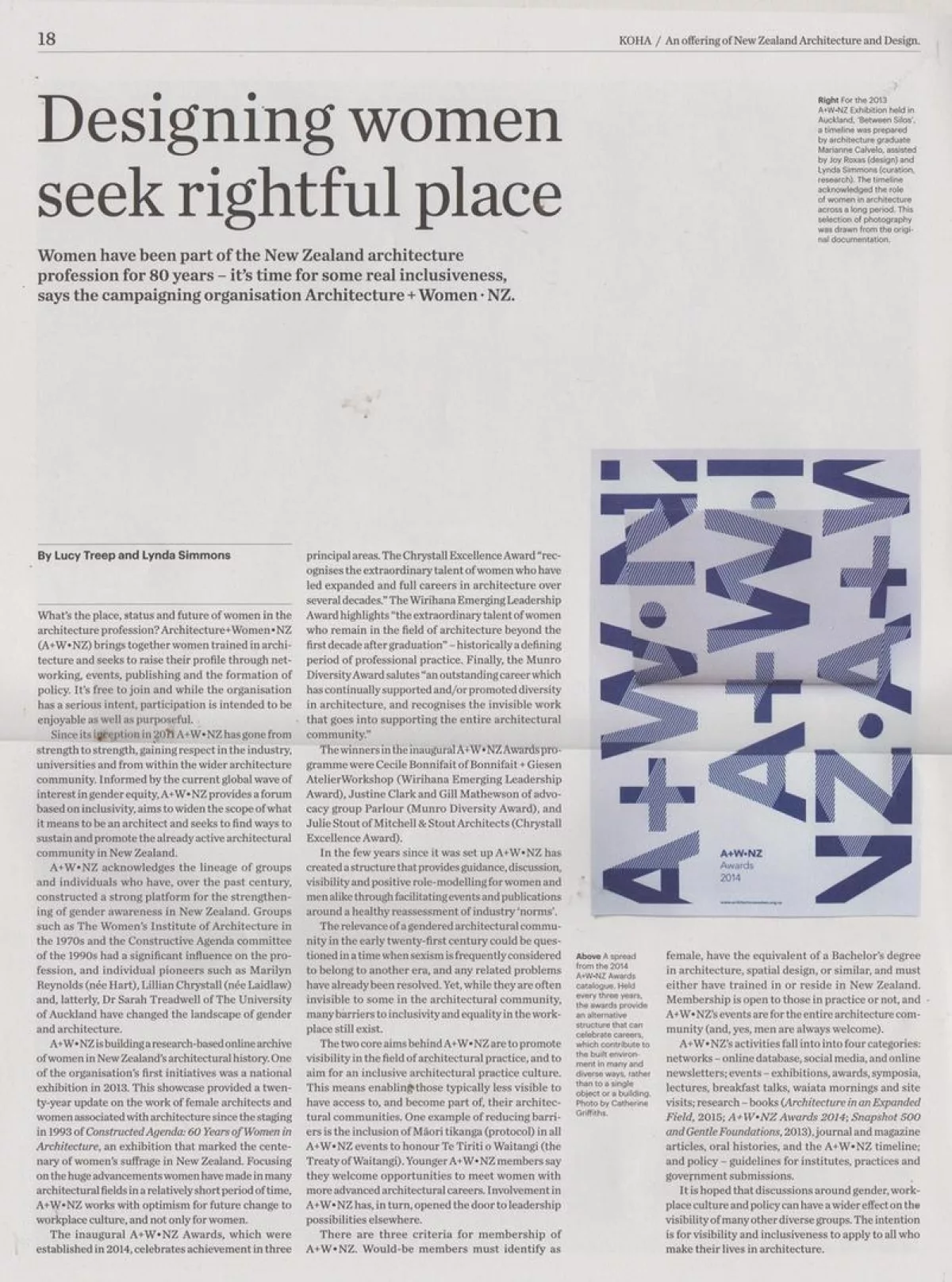
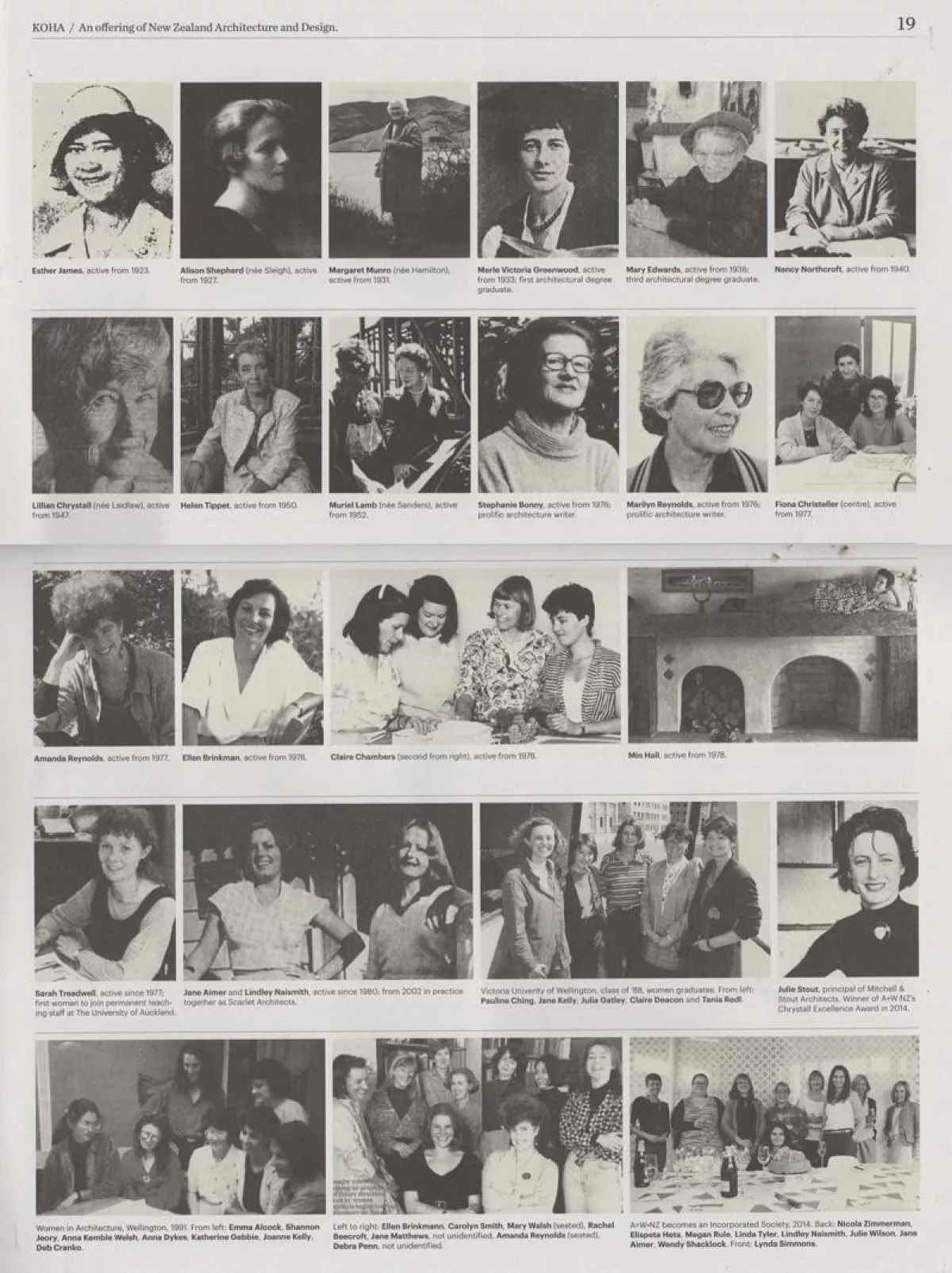
The text from this publication is reproduced here;
"What's the place, status and future of women in the architecture profession? Architecture+Women•NZ (A+W•NZ) brings together women trained in the field of architecture and seeks to raise their profile in the public realm through networking, events, publishing and the formation of policy. It’s free to join and while the organisation has serious intentions, participation is intended to be enjoyable as well as purposeful.
Since its inception in 2011 A+W•NZ has gone from strength to strength, gaining respect in the industry, universities and the wider architecture community. Informed by the current global wave of interest in gender equity, A+W•NZ provides a forum based on inclusivity, aims to widen the scope of what it means to be an architect and seeks to find ways to sustain and promote the already active architectural community in New Zealand.
A+W•NZ acknowledges the lineage of groups and individuals who have, over the past century, constructed a strong platform for the strengthening of gender awareness in New Zealand. Groups such as The Women’s Institute of Architecture in the 1970s, and the Constructive Agenda committee of the 1990s, had a significant influence on the profession, and individual pioneers such as Marilyn Reynolds (née Hart) and Lillian Chrystall (née Laidlaw) and, latterly, Dr Sarah Treadwell of The University of Auckland, have changed the landscape of gender and architecture.
A+W•NZ is building a research-based online archive of women in New Zealand’s architectural history. One of the organisation’s first initiatives was a national exhibition in 2013. This showcase provided a 20-year update on the work of female architects, and women associated with architecture, since the staging in 1993 of the exhibition Constructed Agenda: 60 Years of Women in Architecture, which marked the centenary of women’s suffrage in New Zealand. Focusing on the huge advancements women have made in many architectural fields in a relatively short period of time, A+W•NZ works with optimism for future change to workplace culture, and not only for women.
The inaugural A+W•NZ Awards, which were established in 2014, celebrates achievement in three principal areas. The Crystall Excellence Award “recognises the extraordinary talent of women who have led expanded and full careers in architecture over several decades”. The Wirihana Emerging Leadership Award highlights “the extraordinary talent of women who remain in the field of architecture beyond the first decade after graduation” – historically a defining period of professional practice. Finally, the Munro Diversity Award salutes “an outstanding career which has continually supported and/or promoted diversity in architecture, and recognises the invisible work that goes into supporting the entire architectural community.” The winners in the inaugural A+W•NZ Awards programme were Cecile Bonnifait of Bonnifait + Giesen Atelier Workshop (Wirihana Emerging Leadership Award), Justine Clark and Gill Matthewson of advocacy group Parlour (Munro Diversity Award), and Julie Stout of Mitchell & Stout Architects (Chrystall Excellence award).
In the few years since it was set up A+W•NZ has created a structure that provides guidance, discussion, visibility and positive role modelling for women and men alike through facilitating events and publications around a healthy reassessment of industry ‘norms’.
The relevance of a gendered architectural community in the early twenty-first century could be questioned in a time when sexism is frequently considered to belong to another era, and any related problems already have been resolved. Yet, while they are often invisible to some in the architectural community, many barriers to inclusivity and equality in the workplace still exist.
The two core aims behind A+W•NZ are to promote visibility in the field of architectural practice, and to aim for an inclusive architectural practice culture. This means enabling those typically less visible to have access to, and become part of, their architectural communities. One example of reducing barriers is the inclusion of Māori tikanga (protocol) in all A+W•NZ events to honour Te Tiriti o Waitangi (the Treaty of Waitangi). Younger A+W•NZ members say they welcome opportunities to meet women with more advanced architectural careers. Involvement in A+W•NZ has, in turn, opened the door to leadership opportunities elsewhere.
There are three criteria for becoming a member of A+W•NZ. They must identify as female, have the equivalent of a Bachelor’s degree in architecture, spatial design, or similar, and must have either trained in or reside in New Zealand. Membership is open to those in practice or not, and A+W•NZ’s events are for the entire architecture community (yes, men are always welcome).
A+W•NZ’s activities fall into into four categories: networks – online database, social media, and online newsletters; events – exhibitions, awards, symposia, lectures, breakfast talks, waiata mornings, and site visits; research – books (Architecture in an Expanded Field, 2015; A+W•NZ Awards 2014; Snapshot 500 and Gentle Foundations, 2013), journal and magazine articles, oral histories, and the A+W•NZ timeline; policy – guidelines for institutes, practices and government submissions.
It is hoped that discussions around gender, workplace culture and policy can have a wider effect on the visibility of many other diverse groups. The intention is for visibility and inclusiveness to apply to all who make their lives in architecture."
Lucy Treep and Lynda Simmons.




